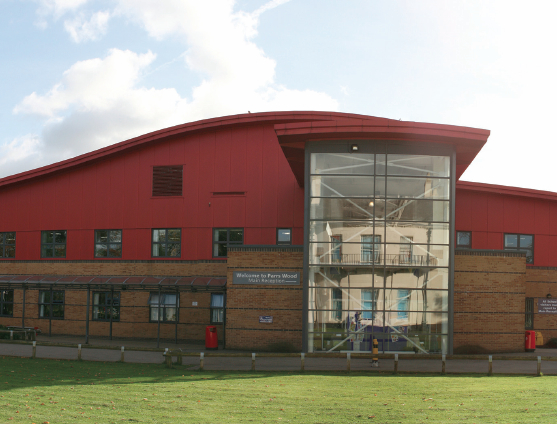TAG | led tubes
GE to deliver energy savings of more than 50% and cut greenhouse gas emissions by more than 7,000 tonnes annually with Santander lighting infrastructure upgrade
Demonstrating that corporations no longer have to choose between ‘profit and planet’, GE has delivered a cash-positive lighting infrastructure upgrade for the UK business of global banking institution Santander.

Lux reports: As the UK’s biggest ever fully-funded LED lighting retrofit, the project will see 90,000 new lights installed across the bank’s UK estate of 800 branches and 13 office buildings – slashing energy use in half and reducing carbon emissions by more than 7,000 tonnes each year.
Providing a full scope solution, GE will deliver lighting services throughout the 10-year contract, which includes optimised system design, installation, maintenance and management.
Importantly, the project is to be delivered using a cash-positive financing model, in a move that is set to reinvent the way people (companies?) think about investment in energy efficient lighting upgrades. The model includes a substantial investment of £17.5 million by the UK Green Investment Bank plc and Sustainable Development Capital Limited, making it the biggest LED-financing package the UK has ever seen.
This unconventional approach, in which the financing partners enable the lighting to be procured as a service rather than a product purchase, allows Santander to benefit from the reduced operating costs and improved energy efficiency of the LED lighting but without the capital investment and impact on the balance sheet – a flexible solution that could pave the way for many other organisations to follow suit.
Dan Vinton, CFO GE Lighting EMEA at , commented: “The lighting industry has changed dramatically in the last few years, moving away from supplying product as a simple disposable commodity, to providing high value solutions to customers while becoming a true energy efficiency partner. The old models of the lighting industry are no longer fit for purpose in this new market and this project represents a glimpse into the new world.”
“More than anything, this project has been about listening to our customer’s needs and working with them to develop a tailored package of lighting and finance solutions that perfectly meet their requirements. The strength, credibility and expertise represented by the GE brand helped make the project bankable which was a key element of success. We’re privileged to have been able to walk this learning journey together with our partners and proud of what we have accomplished here. We are now focused on scaling this offering more broadly and allowing more customers in our target markets and verticals to benefit from this type of smart value creation.”
Nick Roberts, Property Director, at Santander, said: “We launched our 20-20-15 energy efficiency strategy three years ago, in which we committed to reducing energy consumption and CO2 emissions by 20 per cent by 2015. LED lighting has become an integral part of our Energy Efficiency Plan and plays a key role in achieving these overall sustainability goals. Through this lighting upgrade we have taken a huge step forward in executing our long-term efficiency objectives, with GE providing the support, scale and suitable products that we needed.”
Visit www.novelenergylighting.com today to explore what LED can do for you. Distributors for all major brands, including GE LED. Call today for project pricing and financing details: 0208-540-8287, or email: sales@novelenergylighting.com
ge led · ge lighting · LED lamps · led lighting · led panels · led tubes · lighting project finance · lux · Novel Energy Lighting · santander led retrofit
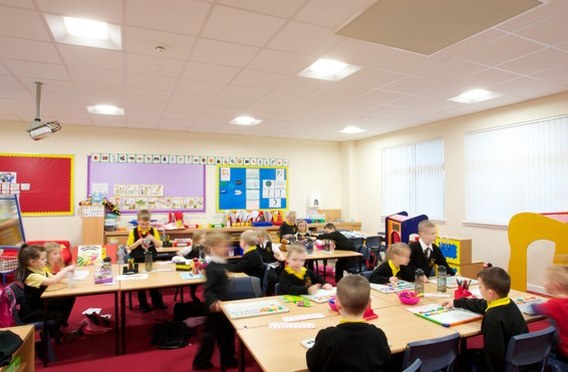
Education is no longer about teaching; it is about creating a stimulating learning environment. Or to put it another way the quantity of information given out by a teacher is less important than the amount of information taken in by a student. This shift in emphasis has impacted the design of education buildings. Previously they were designed around the needs of the teacher whereas they are increasingly designed around the needs of the student. This requires more flexible spaces suitable for formal teacher led sessions and also for less formal group discussions and breakout sessions.
Building design has also developed as the importance of daylight to learning rates and attendance levels has begun to be understood. Therefore modern learning spaces tend to receive significant levels of daylight which in turn leads to significant energy savings in well-designed lighting installations.
Best practice
The European Standard EN 12464-1:2011 Light and lighting – Lighting of work places Part 1: Indoor work places provides recommended lighting levels for academic buildings. However whilst important these recommendations address only a part of the lighting requirements. Education is a communication centred discipline and lighting of people so they appear friendly and so that body language is readily visible is important, as is facilitating the use of all presentation materials and formats. EN 12464-1:2011 also provides recommendations for cylindrical illuminance to ensure good lighting of verticals, 150lx at 1.2m height. It discusses the modelling index, the ratio between the horizontal and vertical flow of light, to provide the correct balance between light and shade. It also highlights the importance of lighting room surfaces to make a space feel light and airy and prevent a sensation of gloom, recommending an average illuminance of 75lx on the walls and 50lx on the ceiling.
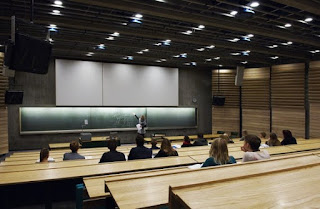
Education should always be centred on the needs of people and care should be taken not to design spaces for technology at the expense of comfort. However in some areas of high DSE use care should be taken to take account of the effect of lighting on screens. Recommendations for lighting for DSE are provided in the European Standard EN 12464-1:2011 Light and lighting – Lighting of work places Part 1: Indoor work places. However these criteria are for general computer technology and if plasma screen technology is used tighter control of luminaire brightness should be considered. Ideally the balance between lighting for people and lighting for technology should be achieved by intelligent use of lighting controls and scene setting to allow lighting to be adjusted to the needs of the moment.
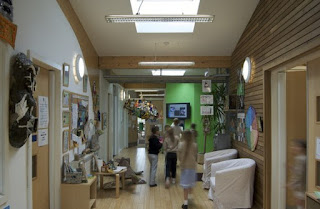
Taking control
Supplying comfortable and effective light is not the same as supplying controlled and energy-efficient light. A lighting system should interact with the space, dimming in response to increasing levels of daylight, turning on or off in response to occupancy within the space, and with increasing use of technology and the need for flexibility of learning styles allow lighting scenes to be set to provide the optimal conditions for the needs of the task at hand. Lighting should be an integral part of the space ambience, giving a calm or lively atmosphere dependant upon the needs of the subject, providing an inspiring and stimulating environment for students and staff.
Visit www.novelenergylighting.com to explore LED lighting retrofit options for your school or university project. Please call us to discuss options or arrange for light designs: tel. 0208-540-8287, email: sales@novelenergylighting.com
LED downlights · led lighting · led panels · led tubes · Novel Energy Lighting · school led · school lighting · university lighting
There are many easy ways facility managers can make fast and permanent changes to their lighting that will save on energy, slash maintenance and give quick paybacks. Swapping traditional technologies for LED is the easiest of all…
There must be things that the hard-pressed facilities manager can do to make their job just a little bit easier, and maybe save a bit of money for better things. Here’s a list of actions that shouldn’t take too much effort to work out and which should see immediate benefits.
Replace 2D lamps with LED modules
There’s no reason why utility bulkheads in service areas should still be fitted with 2D fluorescent lamps. There are plenty of efficient LED alternatives designed specifically to replace the 2D lamp. They’ll provide around 70% energy savings, with improved light output across a lamp life of around 50, 000 hours.
But be careful and do a bit of research. Switching from a fluorescent 2D lamp to an LED retrofit isn’t only an easy fix for you; it’s also an easy option for unscrupulous manufacturers and suppliers, so be sure of who you’re dealing with.
Eliminate all tungsten lamps
There may be a very special reason why THAT filament lamp needs to stay in THAT fixture in THAT room, but otherwise there really is no excuse to be holding onto any filament lamps.
Let’s remind ourselves of the facts: tungsten and tungsten halogen lamps operate at around 10 – 20 lm/W, compared with LED retro-fit lamps that start at 60lm/W and only get better. And some of those LED lamps can be dimmed, making the savings even greater.
The usual warning about LED product needs to be aired here. There are companies out there who just want to take your money and offer very little in return apart from problems. Make sure that you know who you’re dealing with when it comes to LED retro-fit lamps.
Swap out T12 fluorescent tubes
Extraordinarily, it’s still possible to buy T12 fluorescent lamps, because there are still companies making them. It’s like calling into a Ford dealership and being offered a Cortina. The only reason for still using a T12 fluorescent lamp is because no one’s got round to changing those 1800mm and 2400mm battens that were installed thirty years ago.
So, on the grounds that anything else is better than a T12 lamp (except a filament lamp) it’s time to replace the old fixtures with some modern technology. These days that will mean a one-for-one replacement with either an LED fixture or a T5 fluorescent equivalent, depending on which gives you the better performance for the task.
Install presence sensors in toilets
Lights being left on when rooms are vacant is just wasted energy. The simplest fix is to install a movement sensor on the ceiling, wired between the light switch at the door and the light fittings. Then all you need to do is to change the wall-switch to a secure key switch – and leave it in the ON position.
The sensor will detect when someone comes into the toilet and switch on the lights automatically. So far, so easy, but there is one issue that always needs to be taken care of – its no comedy when the lights go out and you’re tucked away in a cubicle. Good sensors are fitted with adjustable time-settings to avoid embarrassment.
Fit absence detectors where you can
If we accept the argument that lighting an empty room is a waste of energy, then we might shift our attention to an energy management structure that might bring savings from working spaces beyond the toilets.
The quick fix is to accept that every room needs to be taken on its merits and provide such energy saving technology as may be relevant. Don’t get hung-up on an estate-wide solution; do what you can and what makes sense.
The common situation is that a room is vacated and stays empty for a decent length of time, with the lighting left ON. Installing absence sensors into the lighting circuit ensures that an empty room automatically switches to an unlit room. Absence detectors switch the lighting off but do not switch the lighting back on when someone comes into the room; that decision is left with the occupants.
The only gripe about absence detectors is that they promote lazy thinking – see ‘education’ below.
Use daylight controls
Most of the time we’re thinking about saving energy from artificial lighting after dark, or in rooms where there is little or no natural light. But, where its available, natural light equals free illumination.
The easy catch is the area along windows where daylight ingress will exceed interior light levels for much of the day. What happens next depends on the state of the ceilings. If rooms are fitted with a suspended ceiling system then there is a readily available easy fix. Install daylight sensors along the window line and create two zones, one that is lit 100% by artificial lighting, while the other benefits from available daylight.
There are varying levels of sophistication around daylight controls, with some buildings controlled so that each run of light fittings (parallel to windows) has separate control. That may be a step too far, but there’s no need to walk away from the idea when a simplistic option is available.
Manage your exterior lighting
This calls for a bit of analysis but can give you a satisfying return on the effort. All external areas can be assessed by their usage and their security needs. A space that is in use at all hours and has serious security requirements will need lighting throughout the hours of darkness, and will probably be supported by a CCTV system. On the other hand, a back-of house loading area that is only ever in use during normal working hours and which is otherwise inaccessible may need nothing more than some low-level security lighting that can be triggered by sensors.
Working through the estate, zoned lighting installations can be retro-fitted with sensors and time-switches to guarantee energy savings, and probably make life for those in neighbouring properties a bit more comfortable.
Swap emergency bulkheads for self-test luminaires
The emergency lighting regulations require regular testing of the emergency lighting installation. In a large estate this has been compared to painting the Forth Bridge and it’s not surprising to hear that some installations receive only the minimum attention needed to stay on the right side of legal.
The easiest fix is simply to remove the old self-contained luminaires that are controlled via a key-switch by the door and replace them with luminaires that contain internal circuitry that enables the luminaire to monitor itself. Regular checks then only require a visual check of the LED display on each fitting, making life far easier for technical staff.
An important note, though. You’ll still have to carry out the annual real-time inspection. Getting free from that chore requires a far more complex solution.
Educate your occupants
The most cost-effective method of energy management is to have knowledgeable building users who understand the implications of lights being switched on and left on when it’s not necessary. The best type of sensor is the person with their finger on the light switch.
Of course, the potential hazard lurking behind any kind of well-intentioned behavioural training is that you end up alienating exactly those people you need to encourage. Teaching staff members to be more alert to energy management needs careful handling; but once the argument is won, the benefits are there for a long, long, time.
Oh, and clean your fittings!
Once all is said and done, and the installation is working well, with all the sensors fitted and staff members on-message there’s still one thing to get to grips with, and that is cleaning.
Most commercial and industrial light fixtures are technical constructions. They have reflectors and diffusers and these will need regular cleaning if the light levels aren’t to fall below acceptable standards. What ‘regular cleaning’ means in practice will be determined by local environment and health & safety factors. Clean Rooms are probably already being kept in an immaculate state, but back-of-house service areas are possibly running at less than the optimum level.
A good cleaning regime means that money is not being wasted by dust and grime stopping that expensive light getting out of the fixture.
Call us to discuss lighting for your premises: 0208-540-8287. Visit www.novelenergylighting.com to explore our range of LED downlights, LED tubes, LED panels, and sensors.
facility management · FM · led 2d · LED downlights · led lighting · led panels · led tubes · lighting · Novel Energy Lighting · occupancy sensors · PIR sensors
Modern offices are increasingly dominated by display screen technology. Whilst appreciable quantities of paper documents are still in use they are normally in association with computers, and this balance is gradually moving toward increasing display screen use and decreasing quantities of written or printed text. A side-effect of this is the reduction in the amount of filing requirements as documents are stored on a computer disk.
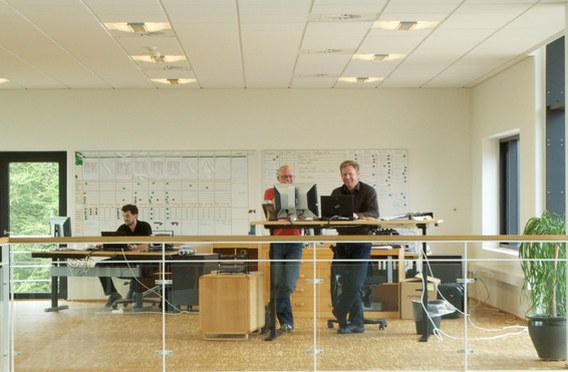
This has resulted in a change in office furnishings with fewer storage cabinets and an increase in technology, and also in a fundamental shift in task position, from predominantly horizontal documents to predominantly vertical display screens.
Additionally in many offices collaborative working is encouraged where formal or informal face-to-face discussions occur to consider short-term issues or long-term plans.
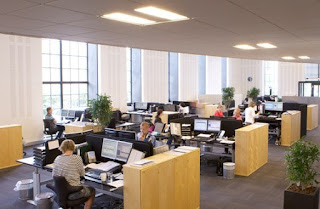
Building design has also developed as energy costs and sustainability issues gain importance, resulting in a high proportion of modern office space receiving significant levels of daylight.
Best practice
These changes impact all aspects of the design of modern office building services including artificial lighting. Lighting must be designed to prevent disturbing reflections on display screens, requiring a high level of optical control and technical competence in luminaire design. Lighting must also provide adequate illuminance to occupant’s faces, modelling features sympathetically and therefore allowing good visual as well as aural communication. This interplay of display screen versus human requirements needs careful planning of a lighting installation to produce a fulfilling space suitable for the task. Recommendations for lighting for DSE and also for modelling of faces and vertical surfaces are provided in the European Standard EN 12464-1:2011 Light and lighting – Lighting of work places Part 1: Indoor work places.
EN12464-1 provides recommended illuminance levels for a variety of office tasks. These illuminance values are task related and best practice is to layer the lighting levels, balancing the level on the task, the level on the surrounding area and the level on the background. It has been shown that the perception of how light or gloomy a space appears is based upon a 40° band in front of the viewer. This is generally the room walls and a portion of the ceiling. It is therefore important that room surfaces are lit to prevent a gloomy, oppressive ambience and EN 12464-1:2011 recommends an average illuminance of 75lx on the walls and 50lx on the ceiling.
Taking control
Supplying comfortable and effective light is not the same as supplying controlled and energy-efficient light. A lighting system should interact with the space, dimming in response to increasing levels of daylight, turning on or off in response to occupancy within the space, and with increasing use of technology, especially within meetings, allow lighting scenes to be set to provide the optimal conditions for the task at hand. Lighting should be an integral part of the office ambience, giving a calm or lively atmosphere dependant upon the needs of the task and space, providing a fulfilling workplace for people to enjoy and be stimulated in, benefiting both the individual and the business.
Call us today to discuss your office lighting needs, tel: 0208-540-8287, or email: sales@novelenergylighting.com. We supply a full range of LED panels, tubes, and downlights suited to office requirements. Visit us at www.novelenergylighting.com to explore our range of Thorn LED products.
led 1200x300 · led 1200x600 · led 600x600 · LED downlights · led panels · led tubes · Novel Energy Lighting · office led · office lighting · thorn led · thorn lighting
Customer challenge
Carrefour, the largest retailer in Europe, was opening a new hypermarket in North West Spain. With no points of entry for daylight in the building, the company needed a way to create a natural shopping environment. Could Philips help Carrefour to attain the right levels of light and reach its sustainability goals?
The right lighting
With over 9,500 stores over 32 countries, Carrefour knows a thing or two about shopping. The company, founded in 1959, has built itself up to become the largest retailer in Europe and the second biggest in the world. When it opened a new hypermarket in Santiago de Compostela, illumination posed a significant challenge as the premises had no entry points for daylight. In line with the group’s sustainability efforts, a bright yet energy-efficient lighting solution was needed.
LED was the answer. For general illumination, Maxos LED was used to bring natural-looking light to the aisles. The crisp, white brilliance creates a refreshing atmosphere for customers without any uncomfortable glare. Ecostyle LED was used for accent lighting, bringing out the quality in merchandise with excellent color rendering. These two fixtures represent energy savings of 55% and 50% respectively – no small chunk of change for a large store.
In the coolers and freezers, Master LED SA tubes were installed to give produce an enticing white glow, and delivering a 60% energy saving. Their virtually heat-free operation means that cooling units can be kept at the required temperature without using extra power, leading to further cost reductions. Control of all the lighting systems is achieved through with Philips Dynalite in combination with the DyNet network. This control system enables the use of pre-programmed light settings, for set-and-forget convenience.
The new 100% LED lighting system saves over 60% of the energy used for lighting compared with Carrefour’s standard lighting systems. This is expected to reduce C02 emissions by an impressive 96 tons per year.
Novel Energy Lighting supplies Philips trade and pro range LED products. Call us today: 0208-540-8287, to discuss your project needs, or visit our
website to explore some of the products on offer.
co2 reduction · energy efficient lighting · led lighting · led tubes · maxos led · Novel Energy Lighting · philips led · philips led tubes · philips lighting · philips maxos · supermarket lighting
 In 2015 the number of lamps being recycled leapt by 44 per cent while luminaires were up 4.4 per cent. Commenting on the news, Nigel Harvey, CEO of specialist lighting WEEE compliance scheme Recolight, said: ‘It is particularly pleasing to see that the 2015 recycling rate bounced back up from 2014. This is probably due, in part, to the recycling of fluorescent waste resulting from major LED integrated luminaire roll outs in business premises across the UK. The lamp recycling rate from 2013 to 2014 saw a drop when, for the first time, the data included LED lamps as well as Gas Discharge Lamps. With very large quantities of LEDs being sold – but very few being returned as WEEE, the inclusion of LEDs inevitably reduced the rate.’
In 2015 the number of lamps being recycled leapt by 44 per cent while luminaires were up 4.4 per cent. Commenting on the news, Nigel Harvey, CEO of specialist lighting WEEE compliance scheme Recolight, said: ‘It is particularly pleasing to see that the 2015 recycling rate bounced back up from 2014. This is probably due, in part, to the recycling of fluorescent waste resulting from major LED integrated luminaire roll outs in business premises across the UK. The lamp recycling rate from 2013 to 2014 saw a drop when, for the first time, the data included LED lamps as well as Gas Discharge Lamps. With very large quantities of LEDs being sold – but very few being returned as WEEE, the inclusion of LEDs inevitably reduced the rate.’
Turning to the luminaire recycling rate, he added ‘The luminaire recycling rate has increased from 2014 to 2015. However, the tonnage of luminaires collected in 2015 is only 5 per cent higher than in 2014. The rate increase is therefore primarily due to the 12.7 per cent reduction in the tonnage of luminaires reported as put on the market. This reduction is likely to be a result of dual use classification, which means that any luminaires that could be used by consumers are now out of scope of the WEEE Regulations.’
- The Environment Agency data also reveals that membership of Recolight has increased more than any other UK scheme. The number of members increased by 23 producers between the end of 2014, and the beginning of 2016. That is also Recolight’s biggest annual increase recorded since the scheme was established in 2007.
Visit Novel Energy Lighting to explore LED retrofit lamps and tubes for your project. Out with the old, in with the new!
fluorescent tubes · led bulbs · LED lamps · led lighting · LED retrofit · led tubes · Novel Energy Lighting · recolight · tube recycling
Philips and Cisco have formed a global strategic alliance that will combine Philips’ LED based connected lighting system with Cisco’s IT network to address a global office market estimated to be worth EUR 1 billion. The Alliance is designed to bring the benefits of the Internet of Things in offices to facilities managers, building owners and office workers.
The pair will combine Philips’ connected office lighting system using Power over Ethernet (PoE) technology with Cisco’s network technology. Light points in the Philips system, equipped with sensors and software applications, can be connected using Cisco technologies.
The lighting network creates a pathway for information and helps enable new services. The system can provide data to optimise user comfort and improve the office environment and office workers can personalise their lighting via their smartphones.
To showcase how Philips and Cisco can work together to unlock the benefits of the IoT in offices, Cisco is installing a state-of-the-art Philips connected lighting system at its Canadian headquarters in Toronto. Philips and Cisco will also collaborate on a joint go-to-market strategy.
Bill Bien, SVP, head of strategy and marketing, at Philips Lighting, said: “Our alliance has two of the world’s biggest and trusted lighting and connectivity brands working together to bring the Internet of Things to life in offices and commercial buildings across the world. Customers will receive the best energy efficient lighting experience in the connected world and be able to use information acquired from their connected lighting system to save energy, reduce costs, improve productivity and optimise their workspace environment. Lighting that is connected to highly secure, reliable IT infrastructure will form the backbone of the smart office of the future.”
Together Philips and Cisco aim to accelerate adoption of this technology in the market and deliver increased connectivity, comfort and efficiency.
Edwin Paalvast, SVP EMEAR, Cisco and executive sponsor of the Cisco – Philips Alliance, said: “The world is becoming digital, and by working with Philips, we can help building owners more quickly digitise their lighting networks to drive better user experiences and efficiency. By partnering with Philips, we are delivering a reliable PoE-powered LED lighting solution using a highly secure IT network.”
Typically, lighting is responsible for 40 percent of a building’s electricity use. The pair estimate that nearly 80% in energy savings and reduced building maintenance costs can be realized by managing, integrating and controlling a Philips LED connected lighting system through a network with Cisco.
To make offices more comfortable, office workers can personalize and adjust LED lighting to their preferences and tasks. For mobile access, office workers can use a smartphone app to access other building services through a communications network.
“The possibilities of this connected lighting system are endless,” said Richard Lees, senior project manager at CBRE, a commercial real estate and investment services firm. “There are so many capabilities of this system that we haven’t even explored yet.”
Visit www.novelenergylighting.com to explore what Philips LED lighting can do for your next project.
cisco · LED downlights · led lighting · led panels · led tubes · Novel Energy Lighting · office lighting · philips led · philips lighting
Comments off ·
Posted by admin in LED
Comments off ·
Posted by admin in LED
Parrs for the course: Parrs Wood HIgh School has demonstrated significant energy savings from Salix funding. Other schools now stand to gain even more under an enhanced programme.
Lux reports: The UK government entity that provides free loans for green projects has broadened its support for schools, offering an all-in-one programme that funds not just the equipment and installation, but also everything from an initial energy evaluation through training students and teachers how best to conserve energy.
The initiative, from Salix, covers a wide scope of energy-related technologies including LED lighting, computer cooling equipment, hand dryers, boiler replacement and insulation.
Salix will spread £2 million across 40 schools in three tranches. It has already selected the first 13 and hopes to select the next two groups after the summer holidays, a Salix spokesperson told Lux.
‘We are looking for a wide variety of schools including building type and age, geographical location and a mixture of primary, secondary and special schools to ensure the sample is a strong variety,’ the spokesperson said.
The money in this case comes from UK Department for Education. Salix is backed by DfE as well by the Department of Energy and Climate Change, the Higher Education Funding Council for England, the Scottish Government and the Welsh Government.
Salix will require a typical payback period of eight years for the interest-free loans to the schools, although it might lengthen that period in some cases, ‘to ensure a school can implement all technologies identified in order bring them down to best practice and make them an exemplary school in terms of energy use,’ the spokesperson said.
Salix has funded schools’ capital costs previously, but the new programme adds the energy survey and ‘human behaviour’ training for energy reduction. It also includes ‘a document which advises what order to make improvements and to procure against,’ and ‘a financial model to show how to meet the costs.’
Under the former, less comprehensive funding scheme, Parrs Wood High School, a technology college in Manchester, used Salix to fund £10,600 in lighting upgrades and £63,700 on ‘building energy management systems’ (BEMS), leading to 45 per cent savings in lighting, and to 20 per cent and 7 per cent savings on gas and electricity related to the BEMS.
Salix had previously lent Parrs Wood £49,120 for an initial lighting upgrade, leading to annual savings of £13,863.
‘The Salix zero per cent interest loan was the most cost effective way for us to make long term savings and reduce our carbon footprint,’ said Parrs Wood head teacher Andrew Shakos.
Another government entity, the Green Investment Bank, lends money for green projects at commercial interest rates typically allows much longer payback periods. Its streetlighting programme can extend payments to
as long as 30 years.
In a controversial move, the government recently said it plans to sell what could be a majority share in GIB.
energy efficient financing · LED lamps · led lighting · led panels · led tubes · Novel Energy Lighting · salix · salix funding · school led · school lighting
<< Latest posts
Older posts >>





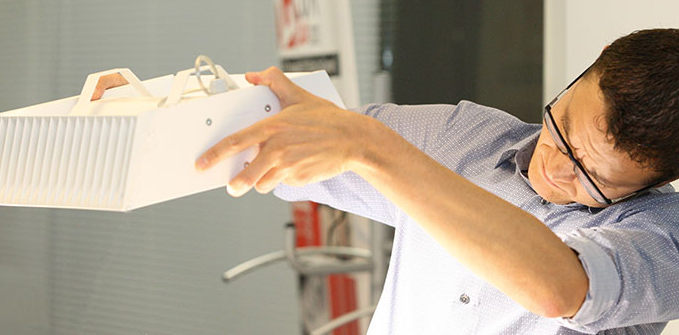



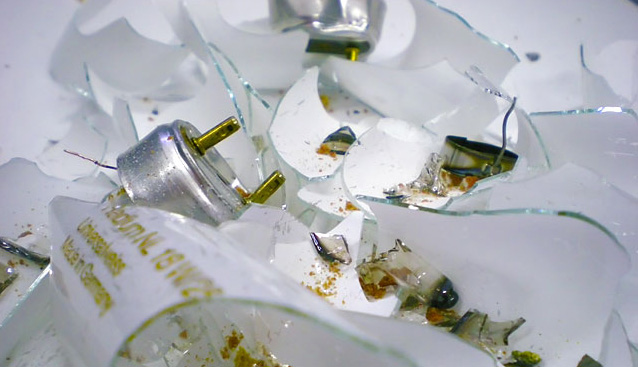
 In 2015 the number of lamps being recycled leapt by 44 per cent while luminaires were up 4.4 per cent. Commenting on the news, Nigel Harvey, CEO of specialist lighting WEEE compliance scheme Recolight, said: ‘It is particularly pleasing to see that the 2015 recycling rate bounced back up from 2014. This is probably due, in part, to the recycling of fluorescent waste resulting from major LED integrated luminaire roll outs in business premises across the UK. The lamp recycling rate from 2013 to 2014 saw a drop when, for the first time, the data included LED lamps as well as Gas Discharge Lamps. With very large quantities of LEDs being sold – but very few being returned as WEEE, the inclusion of LEDs inevitably reduced the rate.’
In 2015 the number of lamps being recycled leapt by 44 per cent while luminaires were up 4.4 per cent. Commenting on the news, Nigel Harvey, CEO of specialist lighting WEEE compliance scheme Recolight, said: ‘It is particularly pleasing to see that the 2015 recycling rate bounced back up from 2014. This is probably due, in part, to the recycling of fluorescent waste resulting from major LED integrated luminaire roll outs in business premises across the UK. The lamp recycling rate from 2013 to 2014 saw a drop when, for the first time, the data included LED lamps as well as Gas Discharge Lamps. With very large quantities of LEDs being sold – but very few being returned as WEEE, the inclusion of LEDs inevitably reduced the rate.’
